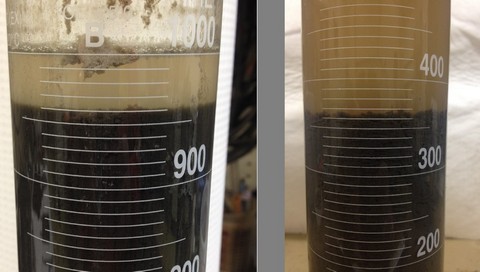TSS and Nitrate Reduction in Root Vegetable Process Water
The EPT EOX system substantially decreased TSS and nitrate concentration in root vegetable process water, thereby allowing more efficient and effective operation of subsequent processes.
The Situation
A variety of root vegetables has been grown and processed for centuries. Many technical advancements have occurred during this time to make the processing streamline and efficient. During the processing, vast quantities of water is used, from washing of the product to various stages of processing to meet end product goals. The waste stream produced often goes through typical waste water treatment, however due to the high total suspended solids and nitrate/nitrites in the waster stream, traditional treatment systems can be slow and inefficient. This in turn has higher operational costs and loss of efficiencies.
The sugar beet processing industry specifically, has seen high costs associated with operation, chemical addition and significant slow down in treatment due to the high TSS and nitrates associated with these processes.

The Solution
The EPT EOX technology is able to create vast efficiencies within the waste water treatment operation for the sugar beet industry. The waste water
stream created through beet water processing involves large quantities of highly organic and high TSS waters. As such GEE had identified two
specific areas within the process where efficiency could not only be gained, but the resulting outcome would be higher treatment ability through the
subsequent processes. The two main focus areas were the digester effluent and the clarifier underflow. By the application of the EPT EOX
system, the TSS was able to be removed at a substatially higher rate, while decreasing the nitrates significantly. This allowed further treatment
to increase efficiency, reduce or eliminate chemical usage and allow this waste stream to be treated and recycled.

Pre and Post EPT EOX Digest Effluent
The Results
The EPT EOX system is very effective at breaking highly organic material, creating floc that has the ability to settle quickly and efficiently. With both the digester effluent and clarifier underflow, when the EPT EOX treatment was applied, settle was >64% more effective and efficient, while leaving the waste water significantly cleaner and allowing subsequent treatment to be more successful.
| Time |
Test 1 |
Test 2 |
| Minutes |
Untreated (ml) |
Post EPT EOX (ml) |
| 0 | 1000 | 1000 |
| 10 | 995 | 920 |
| 15 | 992 | 640 |
| 20 | 990 | 560 |
| 30 | 990 | 495 |
| 60 | 980 | 395 |
| 120 | 960 | 365 |
